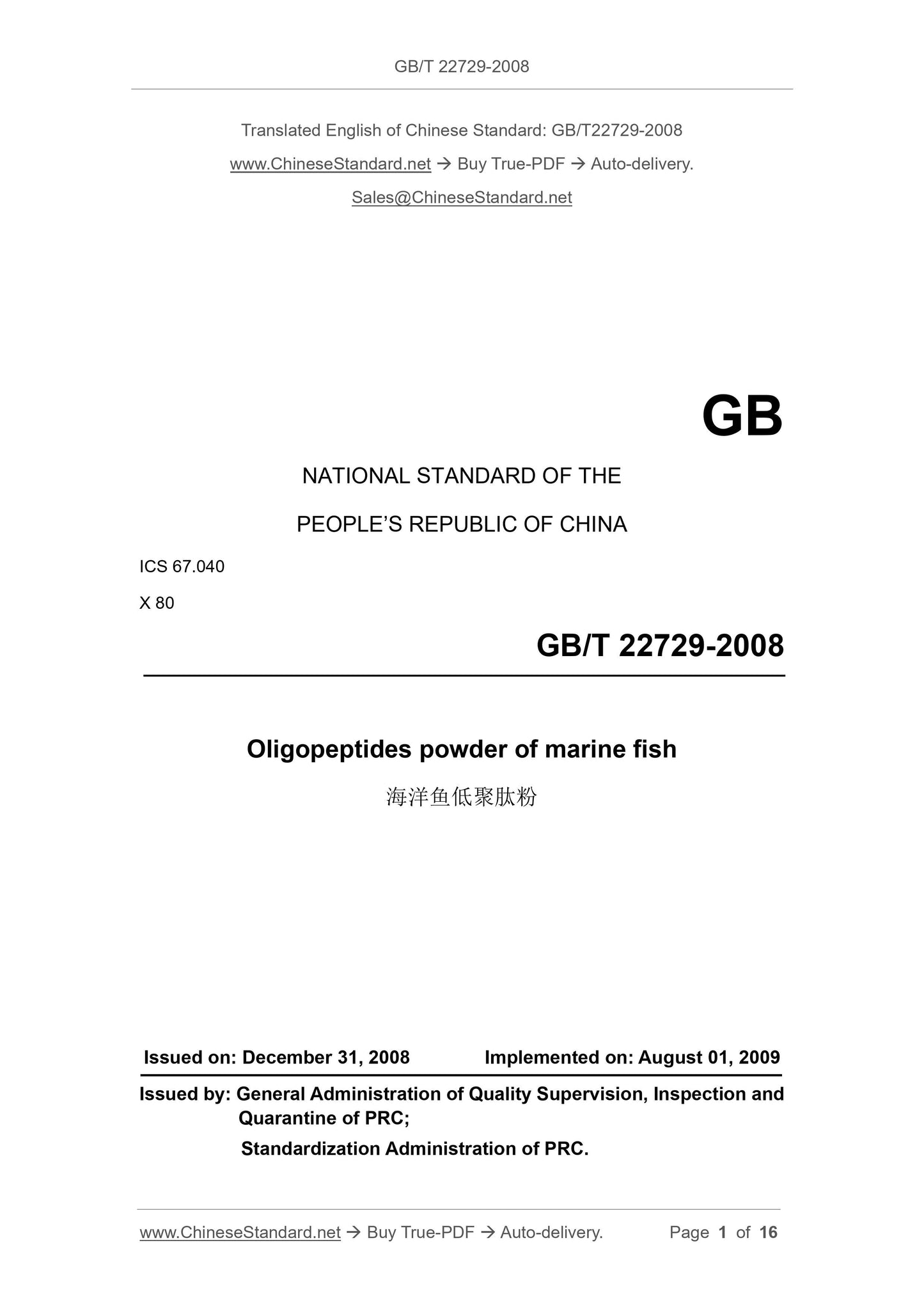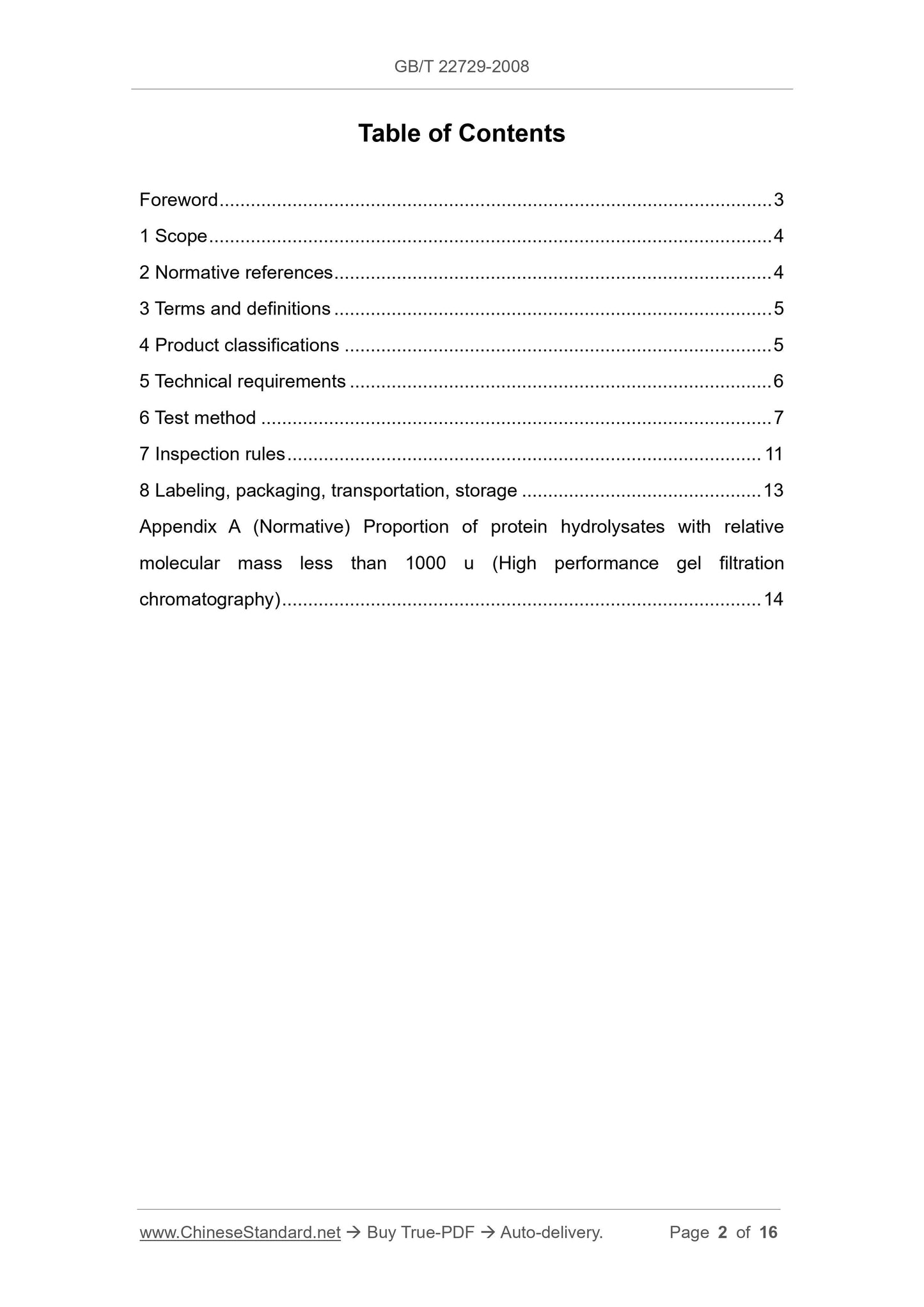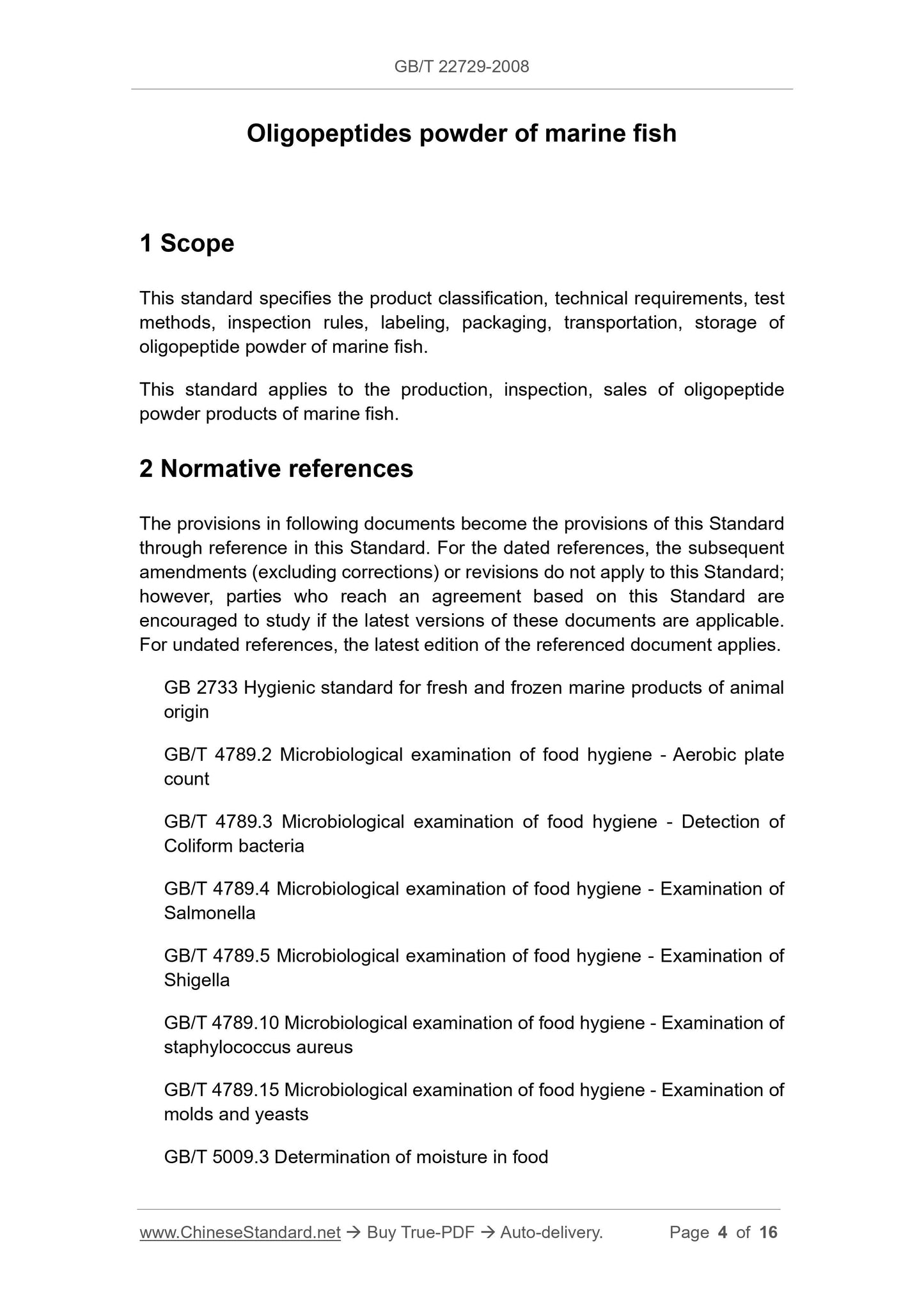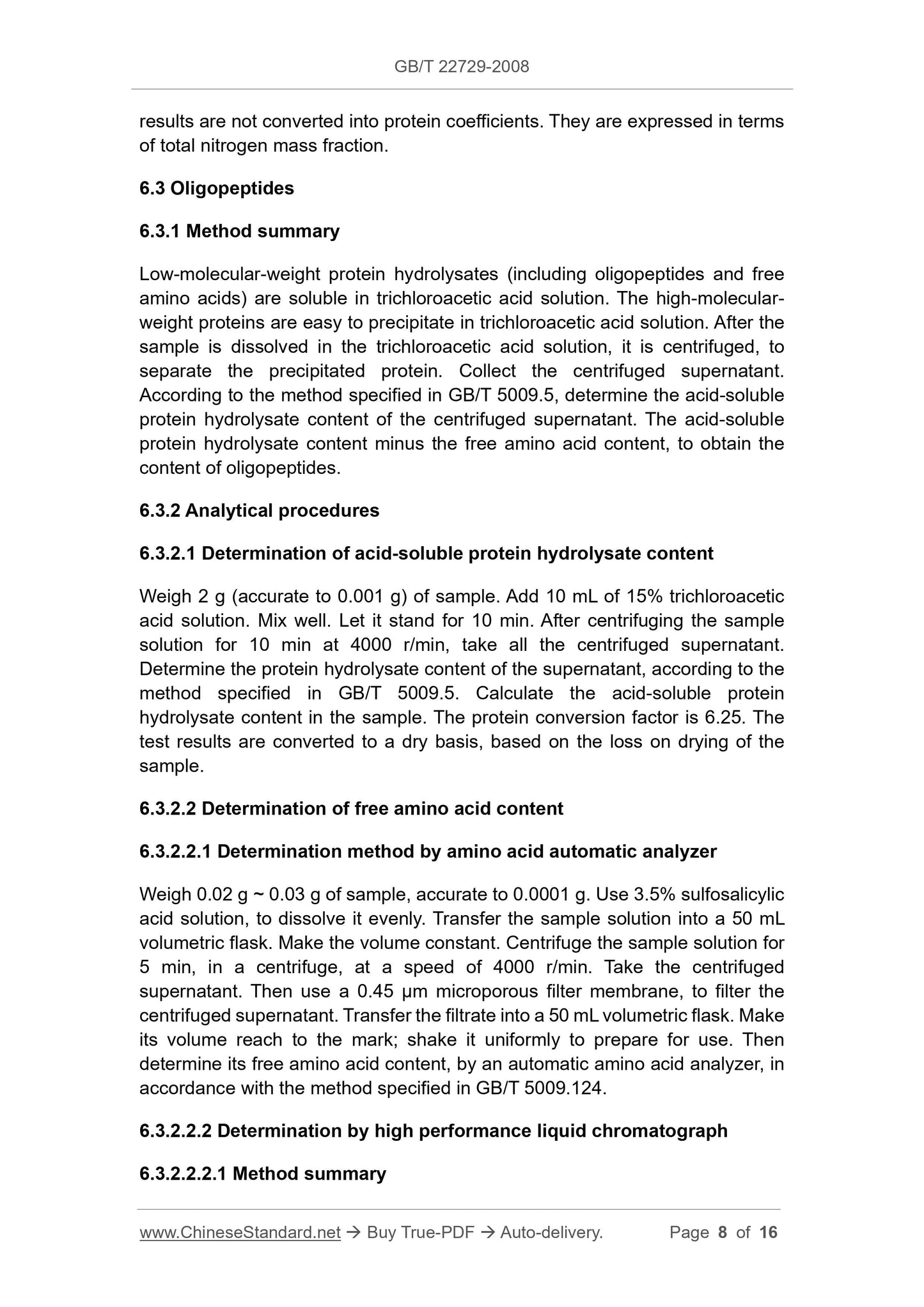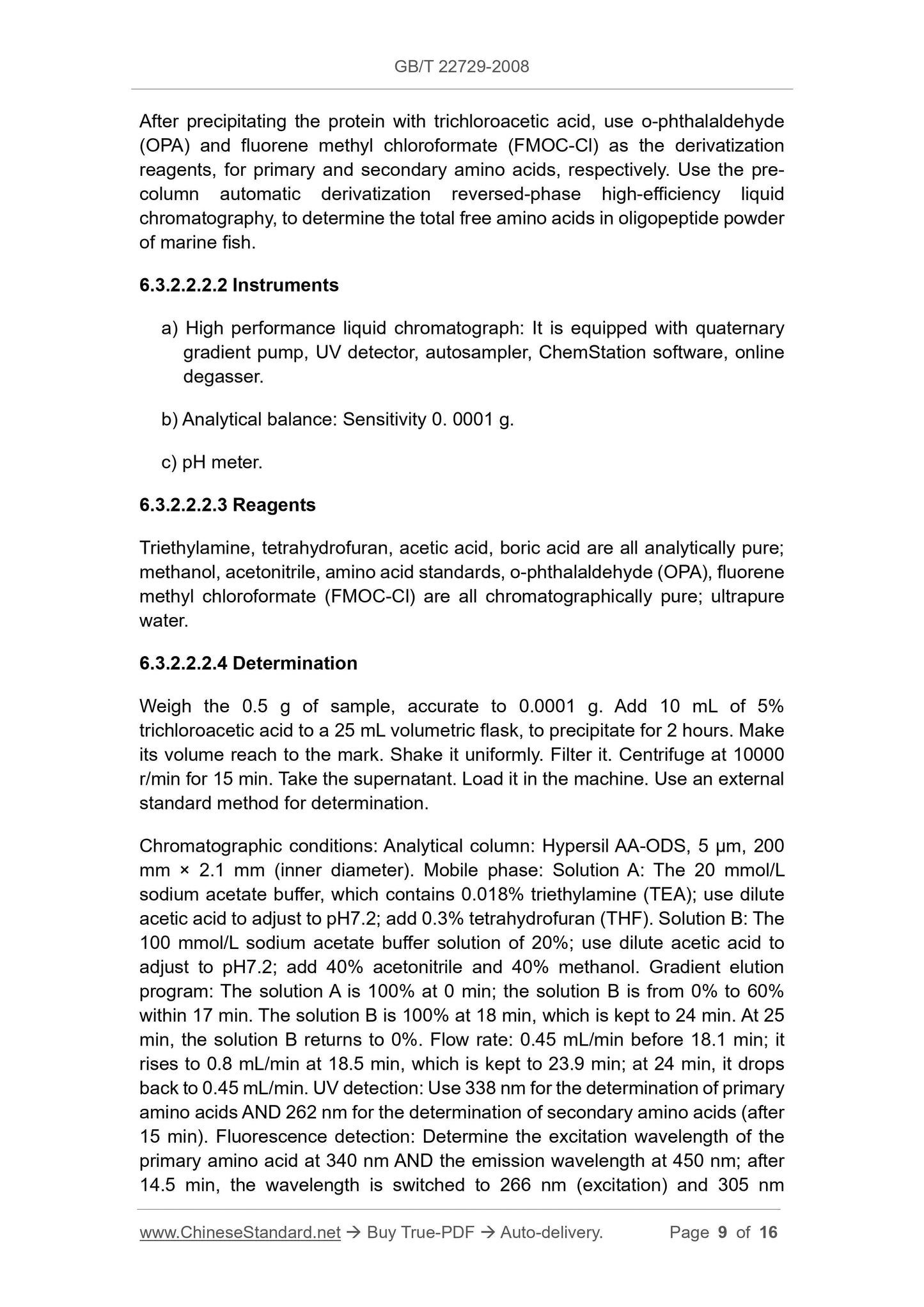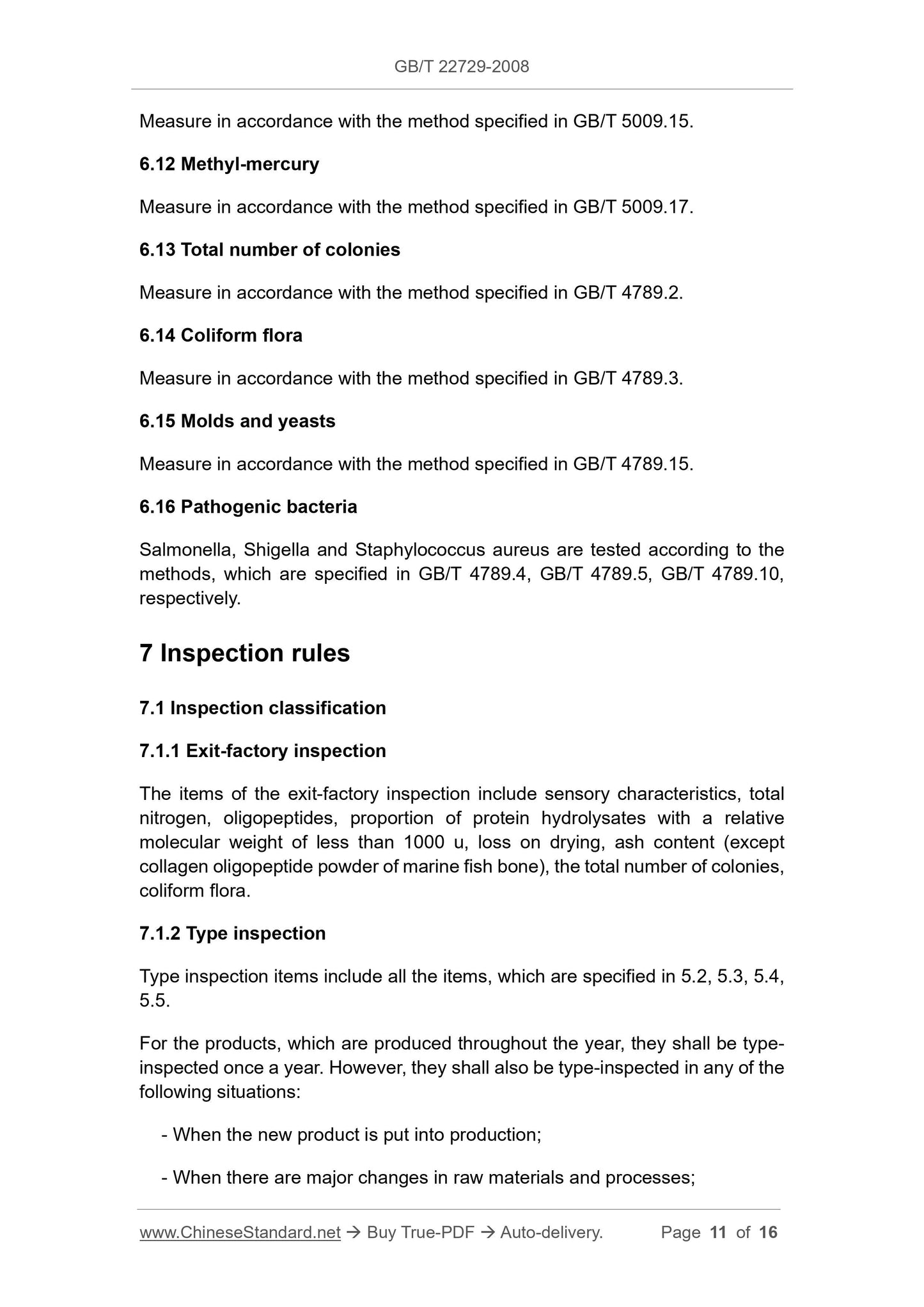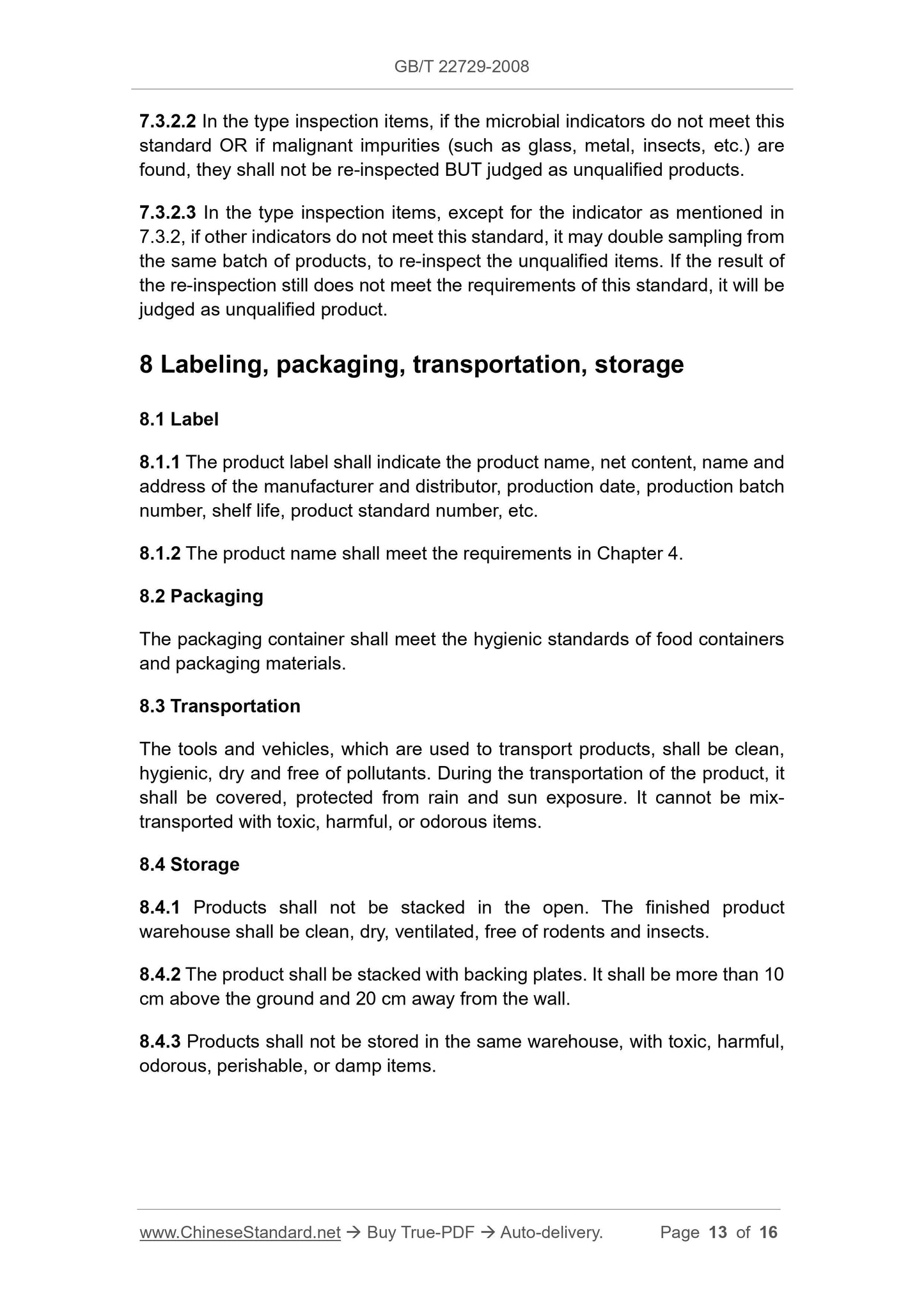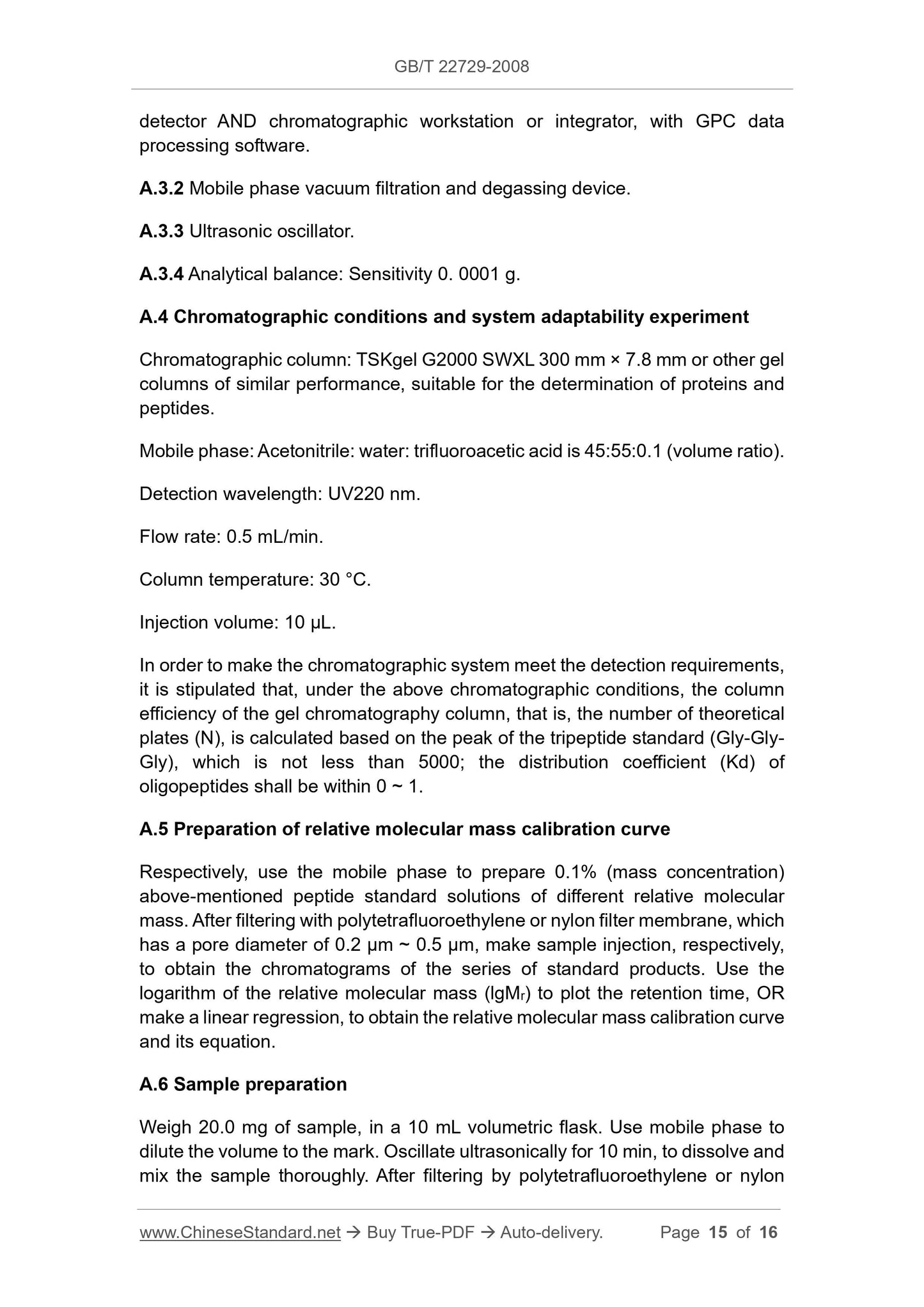1
/
of
8
www.ChineseStandard.us -- Field Test Asia Pte. Ltd.
GB/T 22729-2008 English PDF (GB/T22729-2008)
GB/T 22729-2008 English PDF (GB/T22729-2008)
Regular price
$160.00
Regular price
Sale price
$160.00
Unit price
/
per
Shipping calculated at checkout.
Couldn't load pickup availability
GB/T 22729-2008: Oligopeptides powder of marine fish
Delivery: 9 seconds. Download (and Email) true-PDF + Invoice.Get Quotation: Click GB/T 22729-2008 (Self-service in 1-minute)
Newer / historical versions: GB/T 22729-2008
Preview True-PDF
Scope
This standard specifies the product classification, technical requirements, testmethods, inspection rules, labeling, packaging, transportation, storage of
oligopeptide powder of marine fish.
This standard applies to the production, inspection, sales of oligopeptide
powder products of marine fish.
Basic Data
| Standard ID | GB/T 22729-2008 (GB/T22729-2008) |
| Description (Translated English) | Oligopeptides powder of marine fish |
| Sector / Industry | National Standard (Recommended) |
| Classification of Chinese Standard | X80 |
| Classification of International Standard | 67.040 |
| Word Count Estimation | 11,131 |
| Date of Issue | 2008-12-31 |
| Date of Implementation | 2009-08-01 |
| Regulation (derived from) | National Standard Approval Announcement 2008 No.24 (Total No.137) |
| Issuing agency(ies) | General Administration of Quality Supervision, Inspection and Quarantine of the People's Republic of China, Standardization Administration of the People's Republic of China |
| Summary | This standard specifies the marine fish oligopeptide powder product categories, technical requirements, test methods, inspection rules and labels, packaging, transport and storage. This standard applies to marine fish oligopeptide powder production, inspection and sales. |
Share
